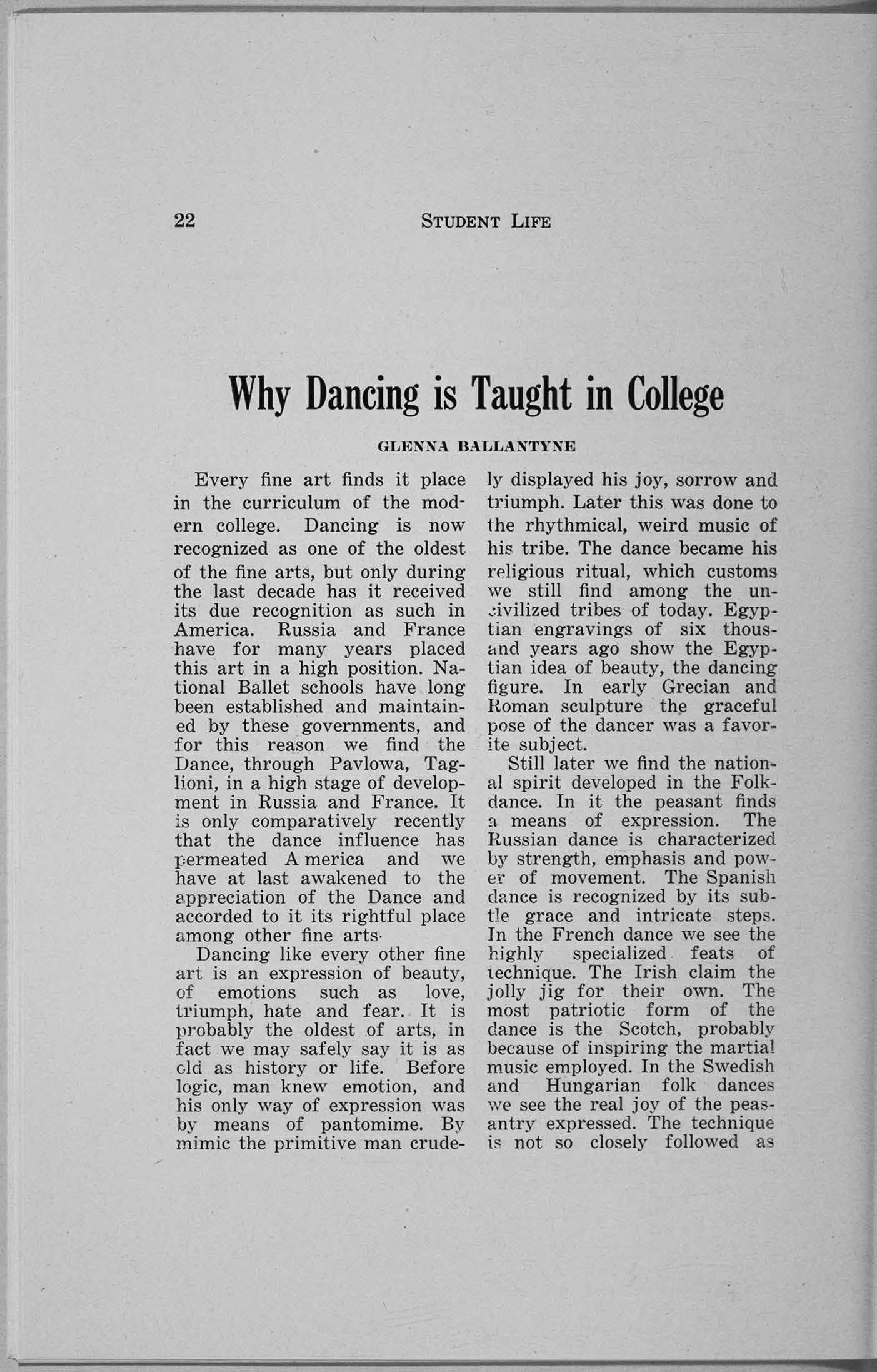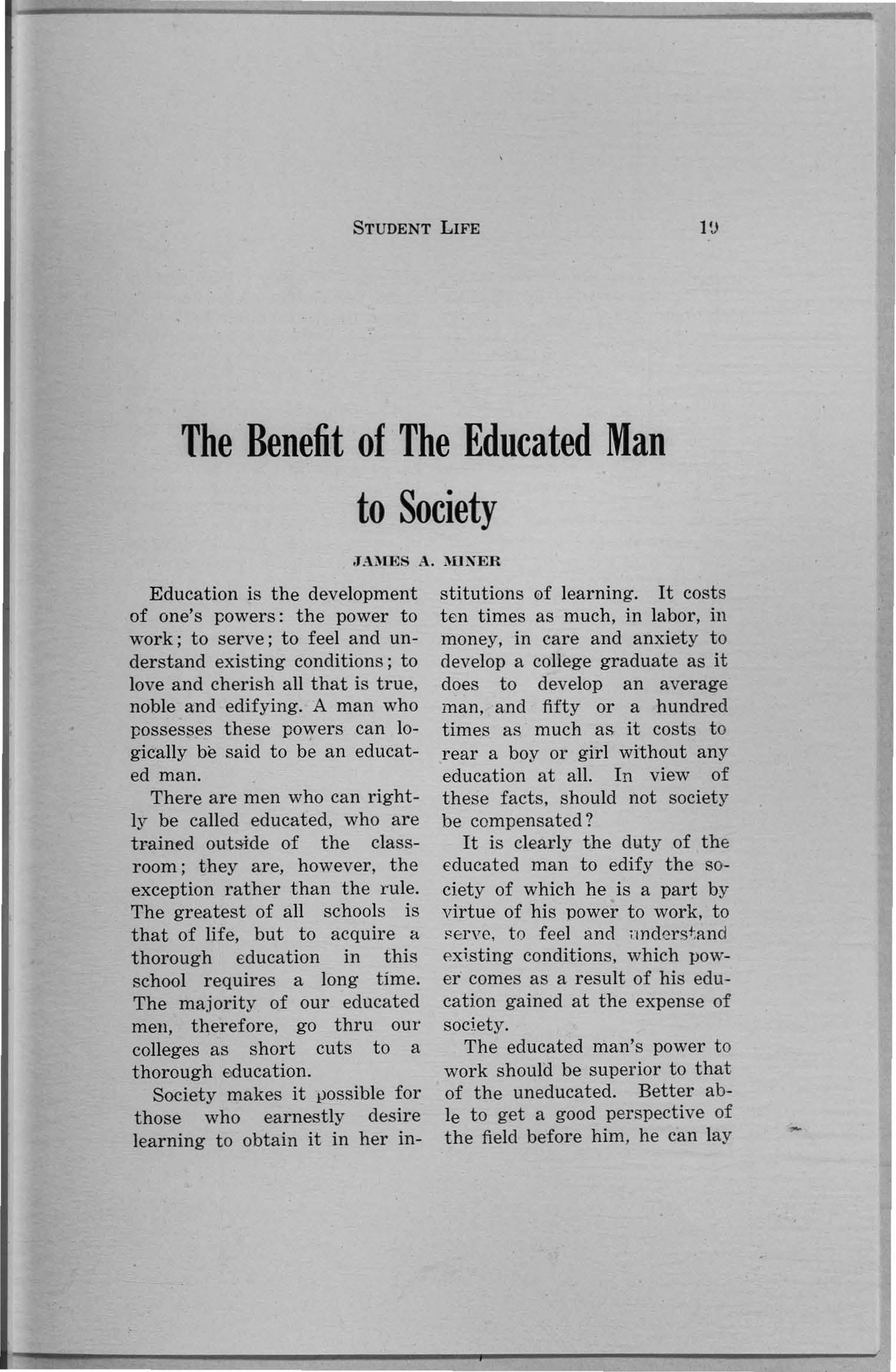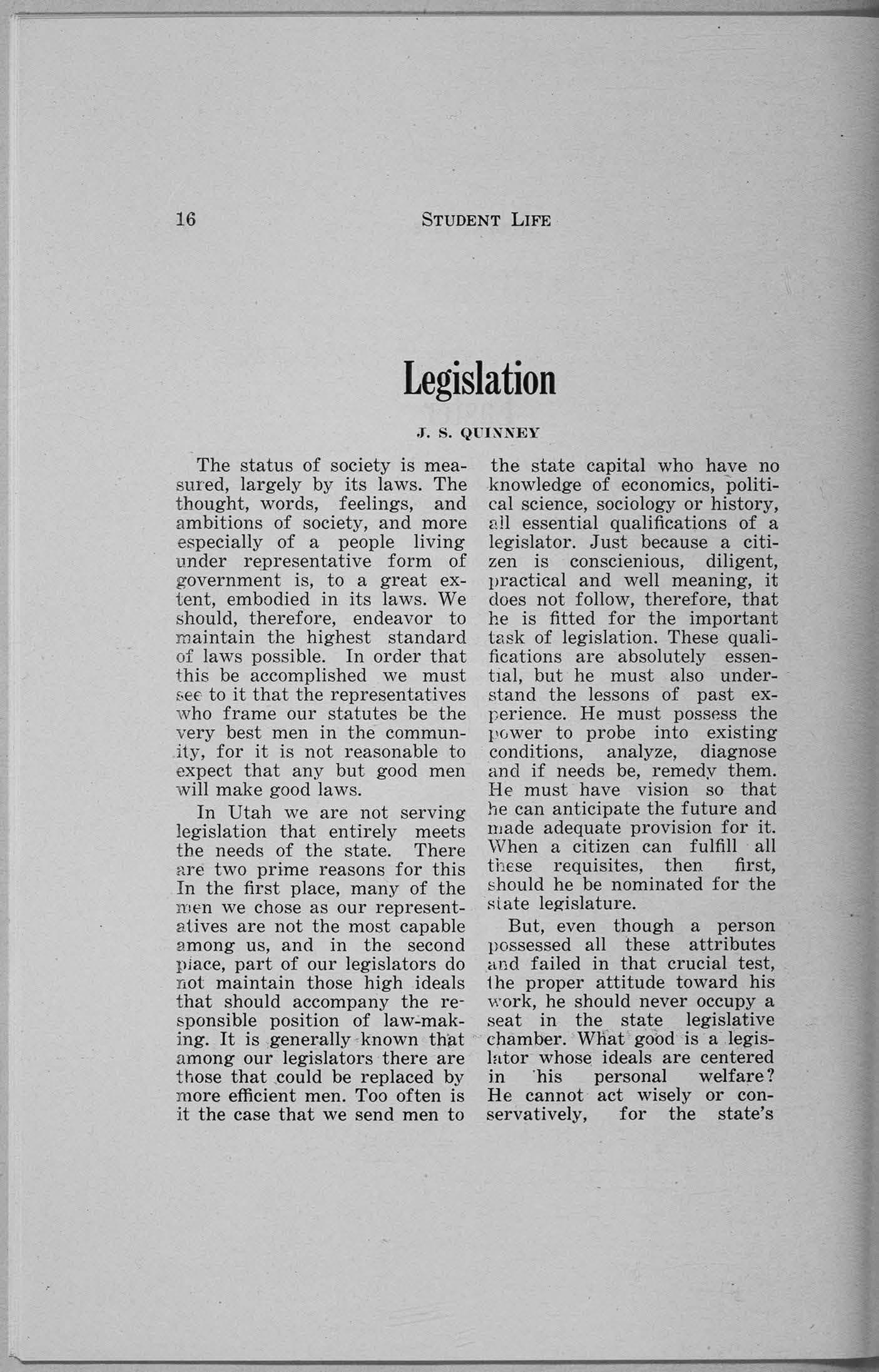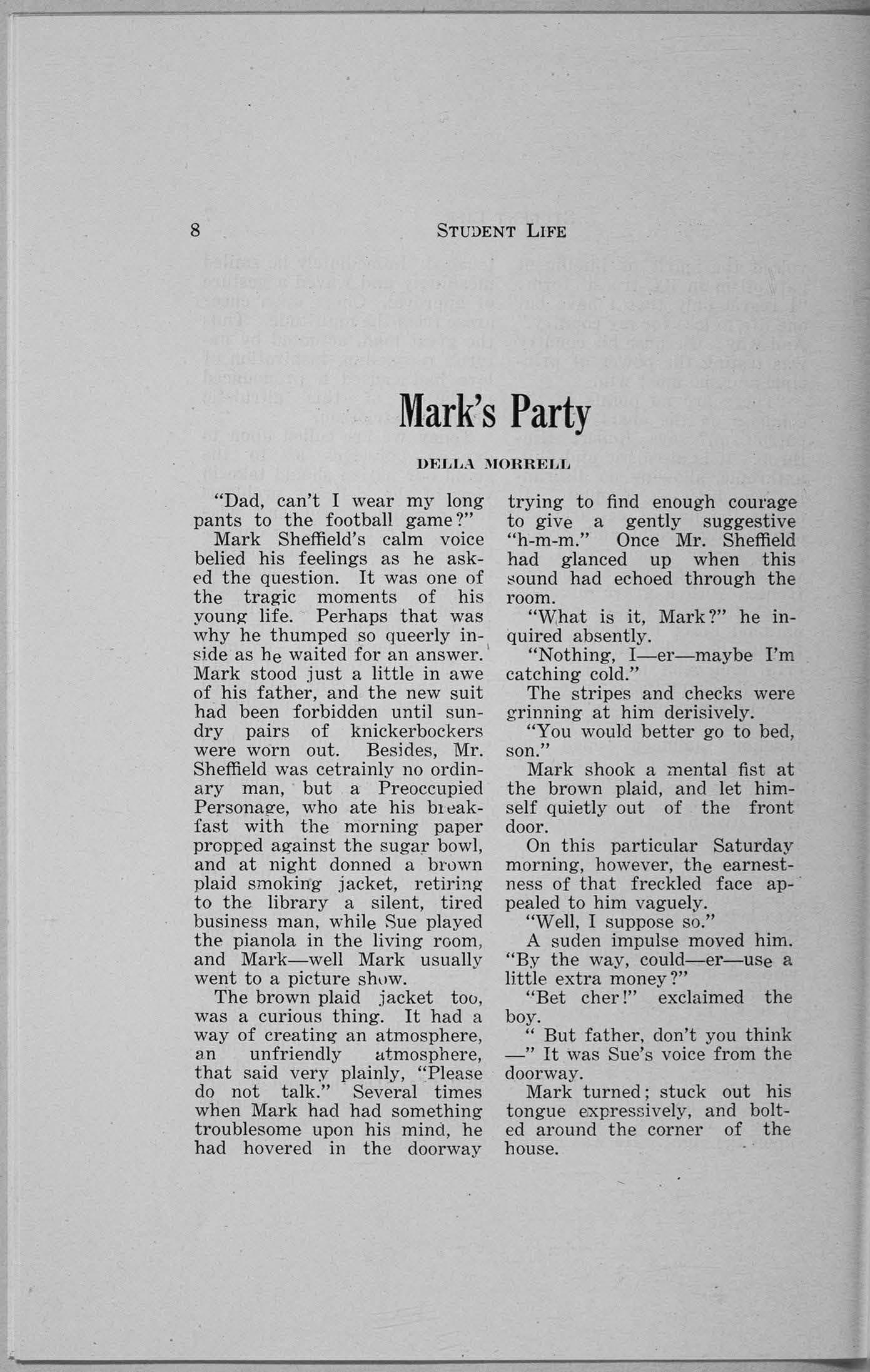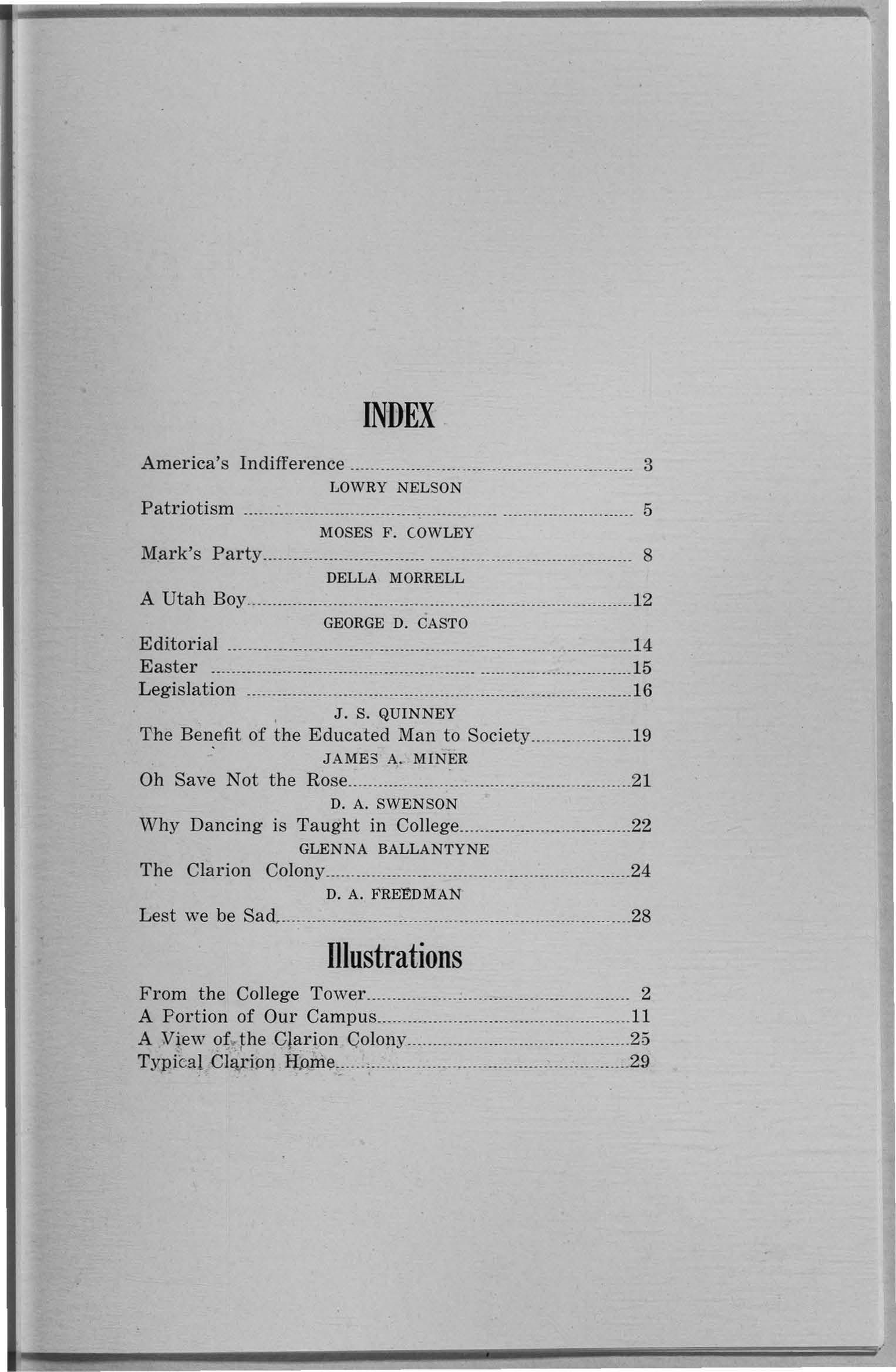22
STUDENT LIFE
WhyDancing is Taught in College GL}~N~A
BALLANTYNE
Every fine art finds it place in the curriculum of the modern college. Dancing is now recognized as one of the oldest of the fine arts, but only during the last decade has it received its due recognition as such in America. Russia and France have for many years placed this art in a high position. National Ballet schools have long been established and maintained by these gover nm ents, and for this reason we find the Dance, through Pav lowa, Tagli.oni, in a high stage of development in Russia and France. It is only comparative ly recentl y that the dance influence ha s permeated America and we have at last awakened to t he app reciation of the Dance and accorded to it its rig htful place among other fine artsDancing like every other fine art is an expression of beauty, of emotions such as love, triumph, hate and fear. It is probab ly the oldest of arts, in fact we may safe ly say it is as Gld as history or life. Before logic, man knew emot ion, and his only way of expression was by mean s of pantomime . By mimic the pri mit ive man crude -
ly displayed his joy, sorrow and triu mph. Later this was done to the rhythmical, weird mu sic of hi s tribe. The dance became his religious ritual, which customs we st ill find among the un_,ivilized tribes of today. Egyptian engrav ing s of six thoushnd years ago show t he Egyptian idea of beauty, the dancing figure . In ear ly Gr ecian and Roman sculptu re the graceful pose of the dancer was a favor ite subject. St ill later we find the national spirit developed in the Folkdance. In it the peasant finds 1, means of expression. The Rus sia n dance is characterized 1.Jystre ngth, emphasis and powâ‚Ź'1' of movement. The Spanish dance is recognized by it s subtle grace and intricate steps . In the French dance we see the high ly specialized . feats of technique . The Irish claim the jolly jig for their own. Th e most patriotic form of the dance is the Scotch, probably beca use of inspiring the marti al m usic employed. In the Swedish and Hungarian fo lk dance we see the rea l jo y of the peasantr y expressed. The technique iR not so closely fo llowed as

